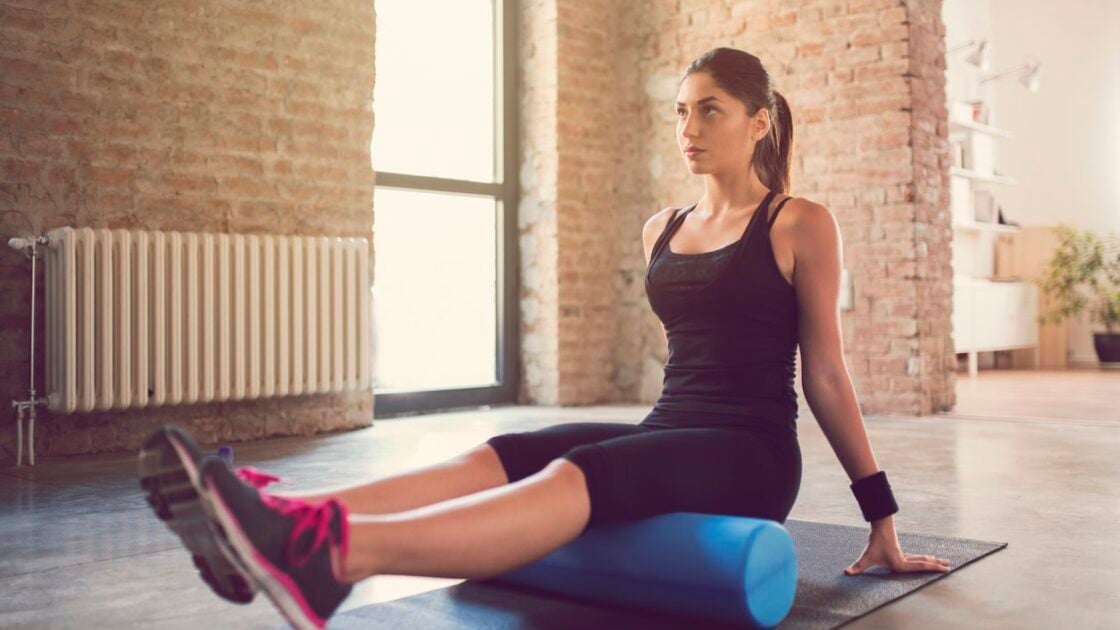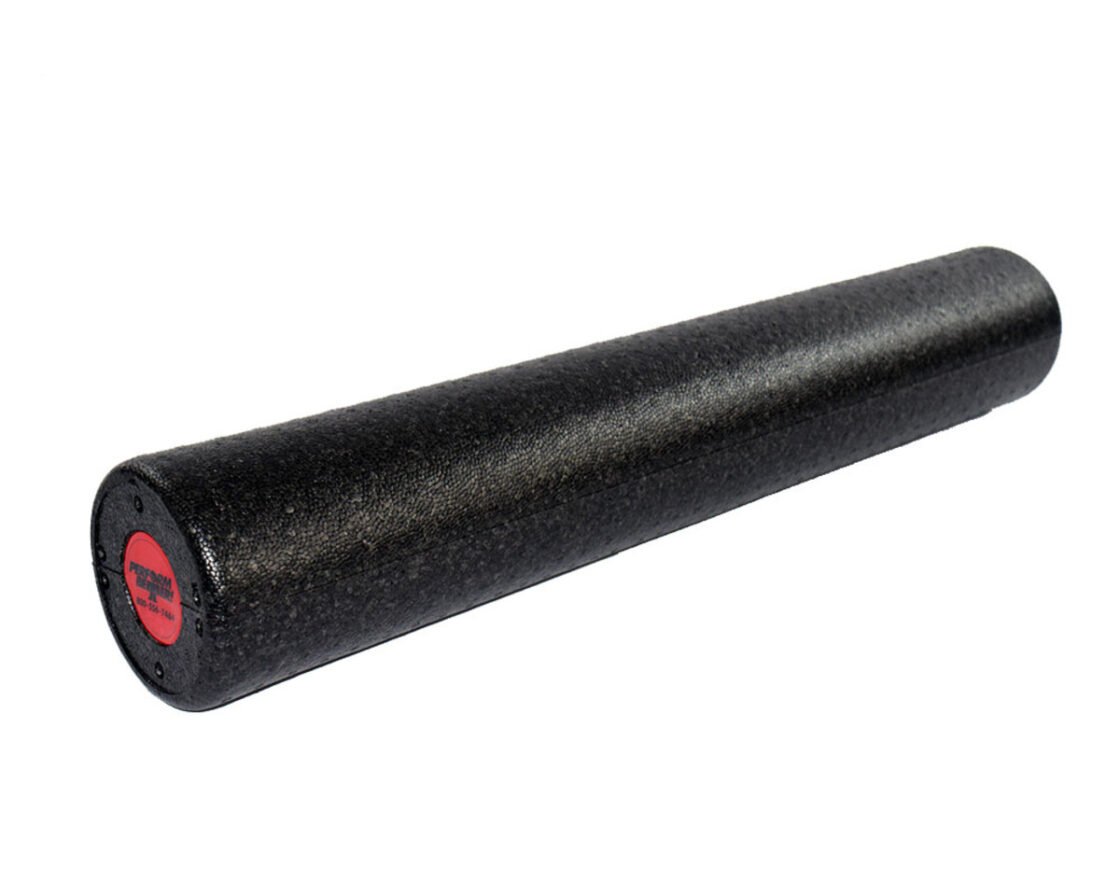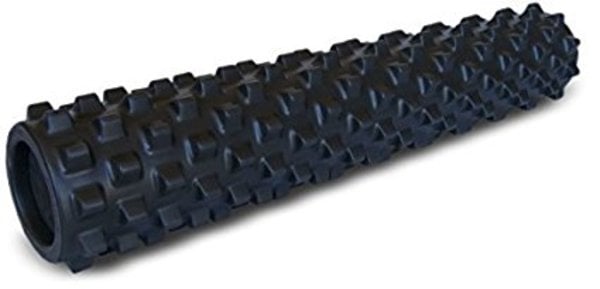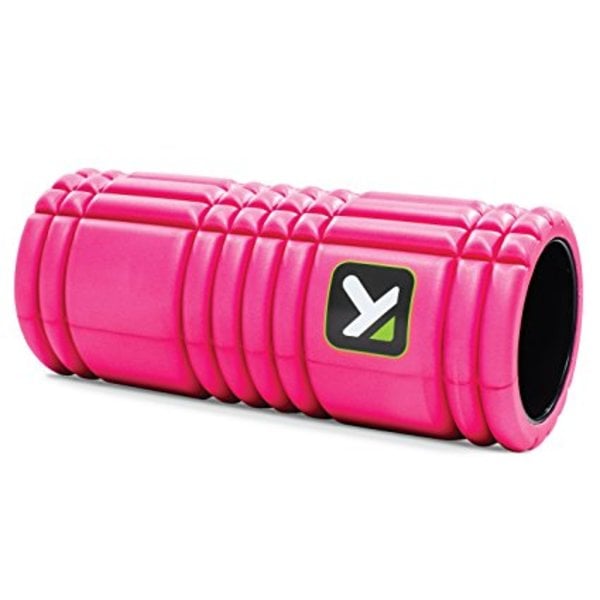I Tried Foam Rolling For a Month and Here’s What Happened to My Body

Confession: I’ve been an avid runner and regular exerciser for years, but I’ve never tried foam rolling.
Well, at least not regularly. I’d see foam rollers at my gym and play around with them once in a while. Foam rolling felt good, if not a little awkward, however, it also felt like too much “work.” If I’m going to be honest, I’ve always been the “get in, get out” type when it came to post-workout routines. The quicker I could stretch out my muscles with my go-to stretches and leave the gym, the better.
But after experiencing some extra tension and soreness post-workout, I realized I might have to bite the bullet and start a new post-workout routine with a foam roller. I decided I was going to challenge myself by foam rolling every day for a month and determine whether or not it was worth the hype.
To make sure I wasn’t “playing around” anymore, I consulted celebrity trainer Lalo Fuentes, CSCS, before I embarked on my foam rolling experiment. He provided some helpful tips and info on why foam rolling can be so effective.
Like, for instance, why foam rolling is important.
“Foam rolling is a method of self-myofascial release or pretty much giving yourself a deep tissue massage,” Fuentes told me. “As we train our muscles, we also need to take care of them by releasing the pressure collected during the exercise. As we are not pro-athletes who have the privilege of getting massages every day, we can with foam rollers. The rollers help our bodies recover faster, and also help prevent any injuries. Especially knee injuries.”
How often did I need to foam roll? “We should foam roll every time we exercise,” Fuentes said. “Either before or after, depending on the exercises you are doing that day.”
And since I exercise pretty much every day, I was going to foam roll everyday. Got it.
As for any foam rolling techniques, Fuentes recommended to “start with the quads, then inner legs, then the IT band, and I would finish with some upper back rolling.”
Lastly, I wanted to know, how long would it take to start seeing results?
“It could be right away, depending on what kind of issues you’re experiencing,” he said. “I started training a runner, and during my initial interview, she told me she had this knee pain. I offered right away to do some rolling, and she declined, stating that she had this pain for the last seven years and had seen five different doctors, MRIs, etc, so it’s ‘just the way her knee is.’ Thankfully, I convinced her to do some rolling anyway. Two weeks later, the pain was gone.”
So off I went rolling.
Week 1
Remembering to foam rolling was my biggest challenge. I was programmed to quickly stretch and leave, so I basically had to rewire my brain to stop, drop and, literally, roll post-workout.
When I did remember to roll, my sessions generally lasted about seven to ten minutes. I used basic smooth foam rollers available at my gym, as well as a “bumpier” version that was harder on my muscles. Okay, actually, it was a lot harder and it hurt a lot. I have a pretty high tolerance for pain, but boy oh boy, that roller had me cringing and biting my lip. I decided I was going to lay off the bumpier one and use it only a couple times a week instead of every day — at least until I got used to it.
Week 2
I woke up to bruises all over my legs and hips! I freaked out a bit, and then realized the culprit: the foam roller.
Turns out that, though not typical for everyone, bruising can occur from foam rolling. Basically, I had overdone it.
“If you are bruising because you are using a hard object, then you might want to step it down a notch. And if you are using a regular foam roller, then start slow, don’t try to solve the problem in one roll,” Fuentes told me. “Your muscles take some time to warm up and open up. You might not feel too much pain the first eight rolls on your quads when you do it for the first time, but after roll eight, when the muscles warm up and open up, then it goes deeper and that’s when a little pain might come up.”
A little? Well, thanks to the bruising, now foam rolling was hurting a little bit more than it normally does. But now I was going to follow Fuentes’ rule of thumb: rolling 15 times at each position and only rolling to a pain threshold that I still feel comfortable with.
Despite the extra pain, I noticed my quads and calves were loosening up. Progress!
Week 3
Although my muscles were loosening up, I was still avoiding rolling out my IT band. As a regular runner, I knew that muscle would be my Achilles’ heel. It’s not only a super tight muscle, but after my bruising experience, I didn’t want any additional pain.
“Some people say that the IT band should not be loose and therefore foam rolling is bad for you,” Fuentes said. “But the whole purpose of foam rolling is not to loosen your IT band. It is merely to prevent knots that will translate into injuries.”
So I decided to bite the bullet and roll that muscle out good — or at least to my pain threshold. And, much to my delight, it didn’t hurt that much. Actually, it hurt good. Like that good pain that you know is really helping you, so you want it to hurt? It felt like that.
I also noticed that not only were my muscles less stiff and more malleable, but also some of my cellulite on my thighs had dissipated. Coincidence? Maybe not! While there isn’t any scientific evidence proving it, some experts have said that foam rolling can help reduce cellulite, albeit temporarily.
Week 4
I admit because I was feeling so good, I didn’t always remember to foam roll. As a result, my muscles tightened up and some of my cellulite reappeared. Which is why I think foam rolling isn’t something you experiment with but is something you commit to in order to see the best results.
After four weeks, foam rolling hasn’t become second nature to me, but I do believe in its benefits because I’ve experienced them. As Fuentes said, “If we do it frequently, we are keeping our bodies knot free and pain-free.”
Which is why I’m trying to stop, drop, and roll daily.
Interested in foam rolling? These products are some of our favorites.
Fuentes says when given an array of foam rollers, he will always choose the 6″ inch round black foam roller, like this one from Perform Better.
PB Elite 6″ Firm Round Molded Foam Roller

OA co-founder Laura Lynn Klein likes this one from RumbleRoller when she wants something extra firm at the gym. “Note on this one, be careful when using! If you push too hard you can bruise yourself so test it out and see how your body responds to it.”

Klein also recommends this one for a smoother and softer roll.

*Disclaimer: Help support Organic Authority! Our site is dedicated to helping people live a conscious lifestyle. We’ve provided some affiliate links above in case you wish to purchase any of these products.
Related on Organic Authority
What the Heck is Foam Rolling, and Should You be Doing It?
How BBG Changed Me: From Cardio Fiend to Resistance Training Advocate
5 Things I Learned From Running My First 10K Race

